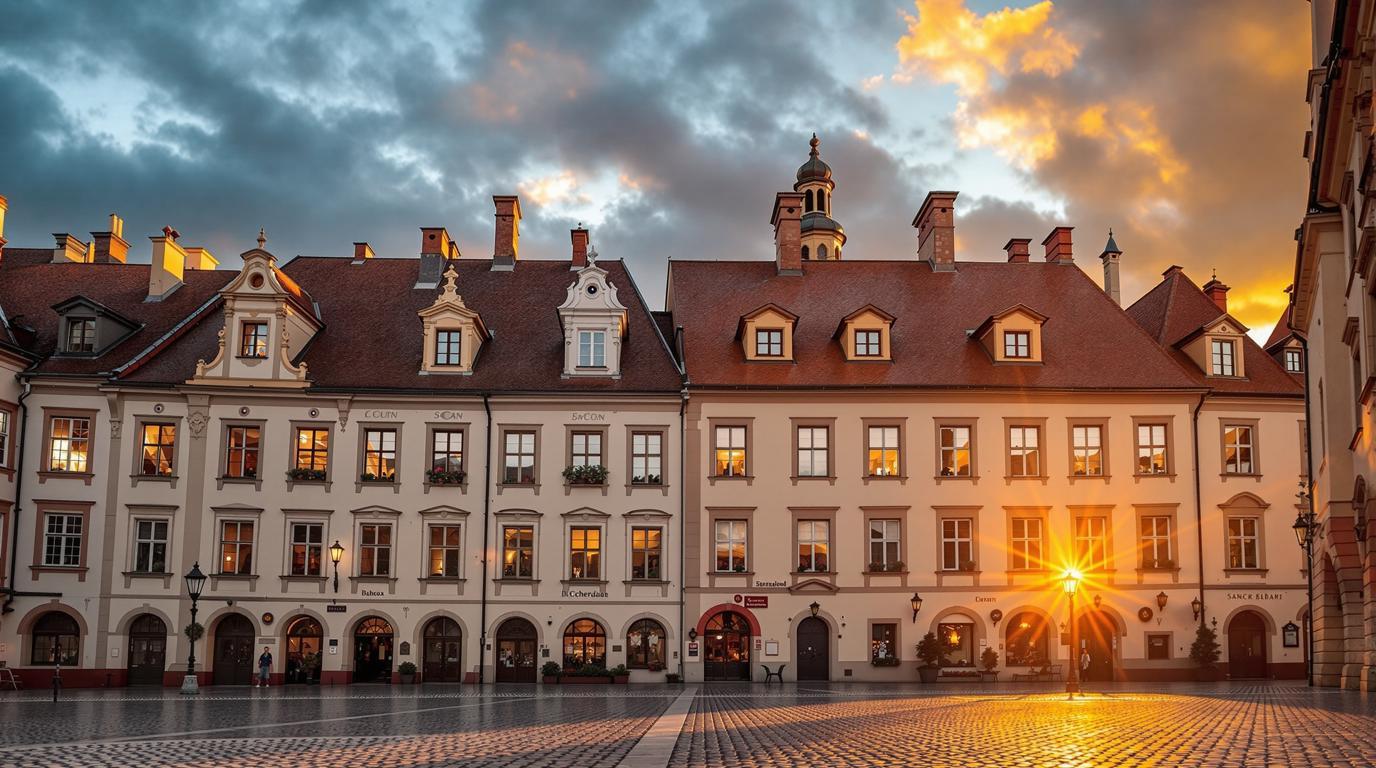The houses seem to watch me as I step into Sibiu’s Piața Mare. Their roof windows, shaped like half-lidded eyes, track my movements across the cobblestones, giving this Transylvanian gem its nickname: “The City with Eyes.” This medieval architectural quirk isn’t merely decorative—locals once used these ventilation windows to monitor the square for intruders. Today, they still observe, silently chronicling the city’s evolution from Saxon stronghold to Romania’s most charming cultural treasure.
Where medieval Saxon heritage breathes through modern Romanian life
Nestled in the heart of Transylvania, Sibiu emerged in the 12th century when German settlers (called Saxons) established a fortified town against Ottoman threats. The city’s three-tiered medieval defense system echoes its turbulent past, with remarkably preserved walls reminiscent of those in a medieval fortress village frozen in time.
“We don’t just preserve our buildings,” explains Maria, a local artisan selling hand-painted eggs in Lesser Square. “We preserve our way of seeing the world—careful, orderly, but with hidden warmth beneath.”
Discovering the soul of Sibiu beyond tourist paths
The passage of secrets and stolen kisses
Tourist maps rarely highlight the Stairs Passage, a narrow, vaulted corridor connecting the Upper and Lower towns. At midday, sunlight filters through occasional openings, creating ethereal spotlight effects on the worn stone steps. Local university students still follow the tradition of sharing a first kiss here, believing it ensures a lasting relationship.
“During communist times, this passage became a meeting place for those exchanging forbidden literature,” whispers Andrei, a silver-haired bookseller whose shop sits at the passage’s entrance. “The acoustics made it easy to hear approaching footsteps from either direction.”
The hidden panorama of towers and mountains
Most visitors climb the Council Tower for city views, but locals favor the Lutheran Cathedral’s bell tower. The 73-meter ascent requires navigating narrow wooden staircases that creak underfoot, but the reward is magnificent: not just the red-tiled city rooftops with their watchful eyes, but on clear days, the Făgăraș Mountains’ jagged silhouette against the horizon, rivaling the dramatic elevations of an ancient Swiss village preserved at high elevation.
Savoring Transylvanian flavors beyond the tourist menus
The unmarked doorway on Filarmonicii Street leads to Casa Bunicii (Grandmother’s House), where Sibiu’s culinary heritage lives on without pretense. Here, Marilena, a round-cheeked woman in her seventies, serves papanași—cheese dumplings crowned with sour cream and forest berry jam—made from her grandmother’s recipe. The dumplings arrive piping hot, slightly crisp outside, cloud-soft within, with jam made from berries she gathers herself in the surrounding forests.
“The secret,” she confides, “is to mix the cheese when the moon is waxing, never waning. My mother taught me this, though the scientists would laugh at our old ways.”
Navigating Sibiu like a seasoned traveler
Timing your visit for magical moments
Arrive for the golden hour between 7-8pm when the setting sun bathes the pastel-colored buildings in amber light. The crowds thin as tour groups depart for dinner, leaving the squares to locals and savvy visitors.
Connecting with cultural rhythms
Time your visit with the International Theater Festival (early June), when performances transform public spaces into stages. For history enthusiasts, the medieval reenactments at ASTRA Museum rival those found in the hidden Greek island with ancient churches that preserves its historical traditions through immersive experiences.
Finding your own watchful windows
As dusk falls on my final evening, I find myself back in the Great Square, the watchful eyes of Sibiu now softened by the amber glow of streetlamps. A violinist plays near the Brukenthal Palace, his melody echoing against medieval walls that have witnessed centuries of human drama. Perhaps Sibiu’s greatest gift is this: the sense that you too are being folded gently into its continuing story—observed, accepted, and ultimately, remembered.
